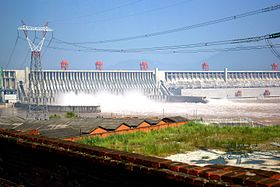Electrical Circuits
Summary of Electrical Circuits / Notes of Electrical Circuits
Solved exercises of Electrical Circuits

Summary
You have seen in your houses, the glowing of bulbs, running of fans, programmes over television and heating of water in boilers they work on electricity. Is it possible to lead a comfortable life without electricity? No. It would be very difficult to live for even a day without some of these benefits of electricity. An electrical circuits are an closed loop or path which forms the network of electrical components .
Symbols for different components of the Circuits

Since electrical circuits consisting of various components,it is quite difficult to draw their actual pictures in the circuit.
1.Simple electrical Circuits

A simple electrical circuit is a closed conducting path of the electric current through an electrical appliance and a switch connected across a source of electricity.
Example : A torch has a simple electrical circuit.
2.Complex electrical circuits

A complex electrical circuit consists of many electrical components such as sources of electric current, switches, sockets, plugs, appliances etc.
Complex electrical circuits are classified into :
i)Series and parallel electrical circuits.
ii) Domestic /Household electrical circuits.
iii) Commercial electrical circuits
1.Series and parallel electrical circuits

Electrical appliances are generally connected in two types of circuits such as series circuit and parallel circuit. Many electrical appliances such as toys, torch, radio, television remote control need more than one cell. You know that two or more electric cells are joined together to form a battery.
a)Cells in series : Cells connected in battery switch conductor bulb Fig. 3.6 : Circuit diagram series results in adding together the voltage of each cell. The increase in voltage increases the electric current which makes the bulb glow brighter. As many cells can be connected in series according to the power required.
b)Cells in parallel: The positive terminals of cells are all connected together. Similarly the negative terminals are connected together. This type of connection is called cells in parallel.
c)Bulbs in series : Take two torch bulbs, a 3 volt battery, a switch and conducting wires. Connect the bulbs in series and complete the circuit. Close the switch so that both the bulbs will glow. But they are not so bright as with a single bulb This is because, we have divided 3 volt between two bulbs in the series.
d)Bulbs in parallel : Take all the components Connect the bulbs in parallel Both the bulbs glow brightly since each bulb is directly connected to the battery without any sharing in voltage. Now remove one of the bulbs. You can observe that the other bulb is not put off
The differences between series circuit and parallel circuit can be identified as follows
| Series circuits | Parallel circuits |
| The electrical appliances are connected in a chain with a positive (+) terminal of an appliance connected to the negative (-) terminal of the other and so on | The electrical appliances are connected in such a way that they have a common positive and a common negative terminal. |
| Appliances do not work to their full capacity as there is sharing of voltage | Appliances can work to their full capacity because each appliance gets designed voltage. |
| All appliances work simultaneously when circuit is closed or they stop working when circuit is opened. So they are inter dependent on one another. | All appliances work independently as they are directly connected to the electrical source. Failure of any appliance do not affect the other |
2.Domestic electrical circuits

Electricity at home : The electricity used in our Hydro power station houses comes from main power generating stations. These power stations transmit high voltage electricity to regional sub stations, which then is distributed it to consumers with required low voltage. Transformers, high tension transmission lines and distribution lines are used to transport electricity from the power station to our houses, stores, farms, factories and Industries. A transformer is a device that transforms electric current from high to low or low to high voltage.
Domestic / House hold wiring system

Domestic electrical circuits may be divided into two sub circuits they are lighting sub circuits and power sub circuits is carried to various rooms through these sub circuits using insulated copper or aluminium wire in a ring system, so as to tap at any convenient point in the house. Separate sub circuits are provided with separate fuses. Lighting sub circuits provide electricity to electric gadgets like
1. electric meter
2. main switch
3. main fuse
4. lighting circuit
5. power circuit 6. earthing
3.Commercial electrical circuits :
Commercial
Electric circuits are having single phase or three phase connection according to their power load requirements. Up to 3,000 watt power load a single phase power supply system is recommended. In case of power load exceeds 3,000 watt,the electricity board authorities insist for three phase supply.
As the power load of the electrical appliances increases, they consume more electric current system.
Note:
Electric power loads of
some house hold electrical
appliances –
electric bulb – 40 watt,
60 watt,
100 watt.
tube light – 40 watt.
fan – 40 watt.
television – 100 watt.
refrigerator – 150 watt.
electric iron – 1000 watt.
air conditioner – 1000 watt.
electric heater – 2000 watt.
mixer / grinder – 750 watt.
computer – 175 watt
Solved Exercise
I. Four alternatives are given under each complete/incomplete statement. Choose the correct answer and put a tick () mark against it.
- An electric circuit with a single appliance, a switch and
a source is.
a) domestic circuit b) simple circuit
c) commercial circuit d) industrial circuit
Ans:b) simple circuit
- The circuit component which makes or breaks the
circuit.
a) cell b) bulb
c) switch d) battery
Ans:c) switch
- Electrical appliances can work to their full capacity
when they are in.
a) parallel circuits b) series circuits
c) simple circuits c) open circuits
Ans:a) parallel circuits
III. Fill in the blanks by choosing correct words from
the given list ( parallel, series, earthing, simple, voltage, positive)
- A torch has a Simple circuit.
- In series circuits negative terminal of one component
is in contact with positive terminal of the other. - Cells connected in series result in adding Voltage
- Electric cells last longer when they are connected in Parallel
- Proper earthing increases safety level in domestic
electric circuits.
IV. Answer the following questions :
- What is an electric circuit? What are its basic components
Ans:An electrical circuits are an closed loop or path which forms the network of electrical components .
The basic components such as resistors, transistors, capacitors, inductors and diodes, connected by conductive wires or traces through which electric current can flow.
2. Explain the importance of a switch in a circuit.
Ans:The purpose of switch in a series circuit is to make it easy to open or close the electrical circuit , turning the flow of electricity on or off.A light bulb in a series circuit it used to determine whether or not electricity is flowing.
3.Draw a neat labelled diagram of a closed simple circuit.

4.What are the advantages of a parallel circuit as compared to a series circuit?
Ans:Advantages of parallel combination over series combination are:
1) In parallel combination each appliance gets the full voltage.
2) If one appliance is switched on/of others are not affected.
3) The parallel circuit divide the current through the appliances.
5.How can you say that, electrical appliances in a series circuit are independent?
Ans:In a series circuit, each added load to the circuit will cause a change to the voltage going to all the other loads in the circuit. If one of the appliances fail in such a way that it opens the circuit, voltage is lost to the whole chain.
The wiring in a house is parallel. (Or more properly, a number of parallel circuits stemming from one source. Loads can be added or removed without affecting the voltage going to other appliances.
6.Electrical appliances in a series circuit can not work to their full capacity. Why?
Ans:In series circuit, current flowing through each appliance is same but voltage is distributed. As less voltage is available for appliance to work, Electrical appliances can not work to their full capacity in series circuit.
7.State the differences between series and parallel circuits.
| Series | Parallel |
| Cells connected in battery switch conductor bulb Circuit diagram series results in adding together the voltage of each cell. The increase in voltage increases the electric current which makes the bulb glow brighter. As many cells can be connected in series according to the power required. | The positive terminals of cells are all connected together. Similarly the negative terminals are connected together. This type of connection is called cells in parallel. |
8.How do you connect cells of each 1.5 volt to form a battery of 12 volt? Find the number of cells required.
Ans:Connect the cells in a way that negative terminals are connected to positive and vice versa. The terminals of the cells will help in connecting the cells together. You can add on approximately 8 cells together to form the 12-volt battery
9.Draw a neat labelled circuit diagram of a domestic wiring system.

10.What is earthing? Why is it essential?
Ans:Earthing is used to protect you from an electric shock. It does this by providing a path (a protective conductor) for a fault current to flow to earth. It also causes the protective device (either a circuit-breaker or fuse) to switch off the electric current to the circuit that has the fault.




























